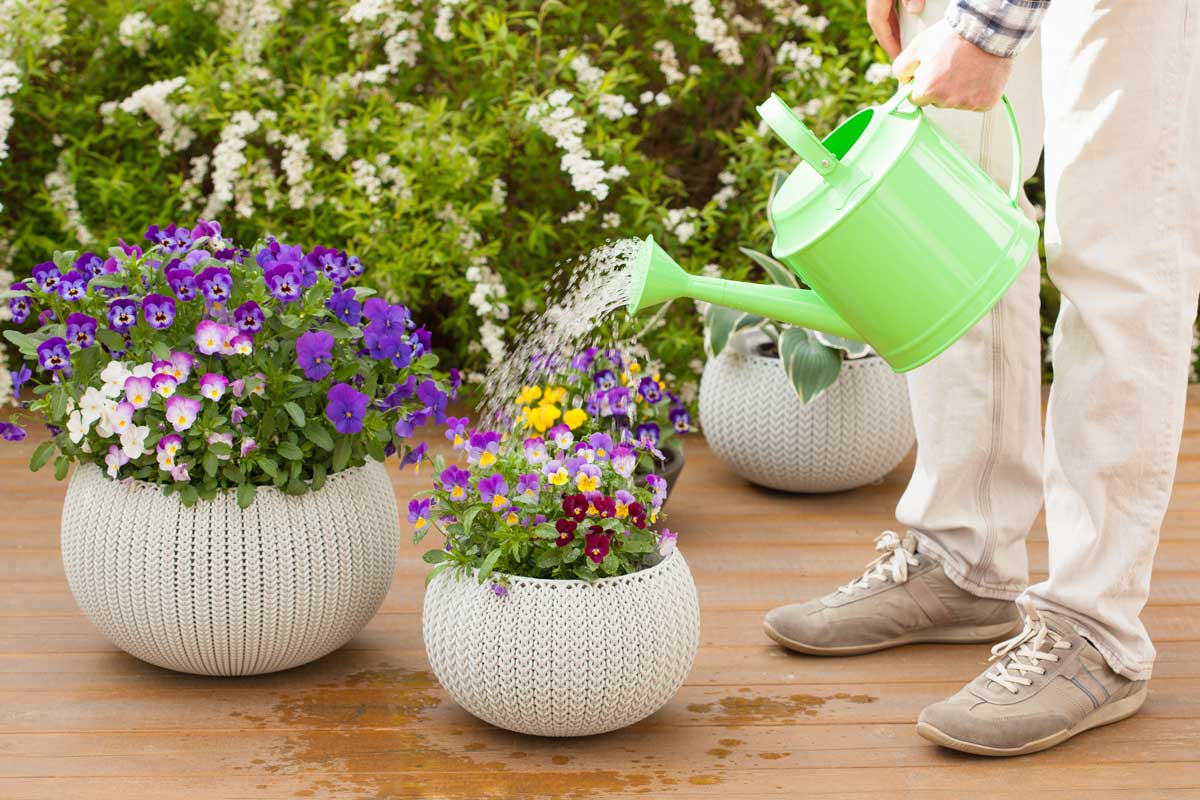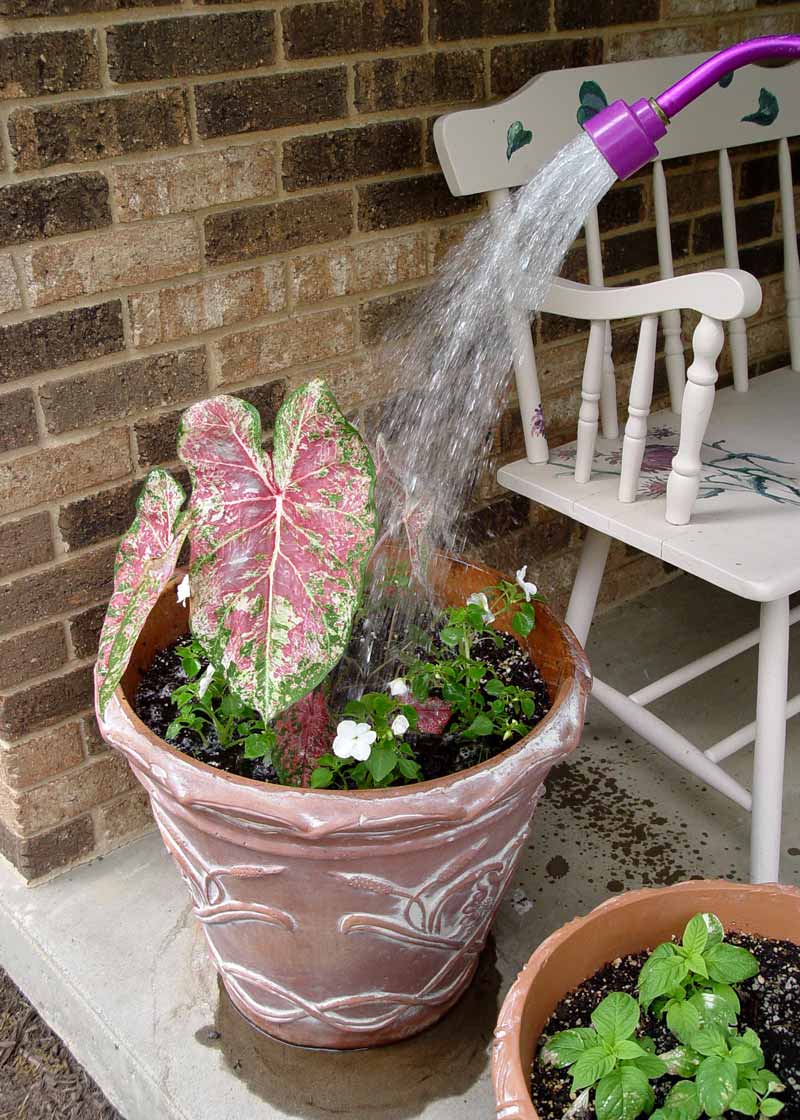8 Myths to Avoid When Watering Your Plants
Watering plants isn’t an exact science. Read this article to help you understand when to and when to not water plants.

Over watered plants suffer from lack of oxygen as their roots cannot soak up the necessary oxygen in the wet soil. The longer the plant goes without this oxygen source, the worse the damage. Ronstik / iStock / Getty Images Plus
Gardeners have long been taught the conventional pot-watering wisdom of soaking their outdoor pots and hanging baskets until water comes out of the bottom drainage holes – often being told to do this daily.
New research from England’s University of Reading, however, found that we might be overdoing it. Researcher Tijana Blanusa used differing water regimens on containers of impatiens and petunias and found that they produced more flowers and bloomed longer when watered at a rate of only about a teacup of water per day (approximately six ounces). She also found that a typical potted plant in an average-sized container will grow well with as little as a half of a teacup of water per day.
Blanusa’s explanation: “Many bedding plants come from species that are adapted to semi-desert or Mediterranean climates and will tolerate a drier regime far more readily than most gardeners imagine. Traditionally we over-coddle them, and add masses of food and water, but actually we are making them more susceptible to vulnerability in dry periods.”
The new research indicates that plants in containers can be overwatered – and not just in ones with no or not-enough drainage holes. Excess water in containers can deprive roots of oxygen and lead to the same root-rotting damage as in poorly drained in-ground soil.
This research adds ammunition to the traditional advice of starting each growing season with fresh, high-quality, light-weight and well-draining potting mix. Garden soil or heavy, poor-quality potting mix doesn’t drain as well. Even quality mix breaks down over the course of a growing season, resulting in a second-year medium with smaller particles that compact more and drain slower than fresh mix. Used potting mix can be worked into garden soil at the end of each season… it doesn’t have to be discarded.
The British study doesn’t address whether plants in high-wind and/or hotter, drier climates will perform the same way as in England. This might make an interesting at-home experiment for curious gardeners. Try growing two identical pots in the same exposure – one watered with just a teacup of water at a time and one soaked until water drains out the bottom.
Note that plants growing in large containers also likely will need more than a teacup of water per watering.

New research suggests that flower pots and hanging baskets may not need as much water as we think. No longer is the goal of watering to see the water seep from the pot as it does in the above photo. George Weigel